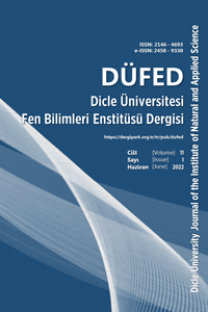Mevcut bir Yığma Yapının Farklı Hızlı Değerlendirme Yöntemleri ile Değerlendirilmesi
Yapıların deprem güvenliğinin belirlenmesindeki esas amaç, mevcut yapılarda gerekli inceleme ve hesaplarının olası bir depremden önce yapılarak, mevcut yapı stoğu hakkında verilecek kararların hızlı ve doğru verilmesini sağlamaktır. Bu amaçla hızlı değerlendirme yöntemleri mevcuttur. Bu çalışmada, Diyarbakır Sur içinde yer alan tarihi bir yığma yapı iki farklı hızlı değerlendirilme yöntemi ile değerlendirilmiştir. Çalışmada, Çevre ve Şehircilik Bakanlığının 2013 yılında yayınladığı yönetmelikte yer alan yığma yapılar için birinci aşama değerlendirme ve Kanada Sismik tarama yöntemi kullanılarak seçilen yığma bina değerlendirilmiştir. Bu çalışma ile yığma yapılar için önerilen birinci aşama değerlendirme yöntemlerinin kullanılabilirliğini ortaya konmuştur. Bu çalışma, yığma yapıların değerlendirilmesi için kaynak olacaktır
Investigation of an Existing Masonry Building with Different Rapid Assessment Method
The main objective in the determination of building’s earthquake safety is to enable giving the correct decisions on the existing building stock by conducting the necessary inspections and calculations on existing buildings in advance of a possible earthquake. In this context accurate results may be achieved by employing methods that enables faster evaluation of buildings and provides more accurate results. The purpose in these rapid methods is to determine the buildings that have priority in terms of risk and accordingly to minimize the number of buildings to be inspected. Among these methods the Canadian Seismic scanning method and the first stage evaluation method included in the principles concerning the determination of risk-bearing buildings promulgated by the Ministry of Environment and Urbanization in 2013 were used in the present study. Within the scope of the study, an existing masonry construction in Diyarbakır was selected. The performance scores of these structures were calculated separately with the use of the mentioned two methods. This study would be a source to assessment of masonry structures
Keywords:
Diyarbakır, Masonry building, Rapid assessment,
___
- 1. Riskli Bina Tespit Esasları (RBTE, 2013) “Afet Riski Altındaki Alanların Dönüştürülmesi Hakkında Kanunun Uygulama Yönetmeliğinde Değişiklik Yapılmasına Dair Yönetmelik”, Çevre ve Şehircilik Bakanlığı
- 2. Karakaş, S., Karaşin, A., Gürbüz, Ş., Özyılmaz, H. “Diyarbakır Suriçinde’ki Yığma Binaların Afet Potansiyeli Bakımından Değerlendirilmesi”, TMMOB Afet Sempozyumu, s.369-374.
- 3. ÇŞB,(2015),http://www.csb.gov.tr/db/altyapi/editordosya/ Gun%201_Ders%202_RiskliBinaTespitEsaslari(3).pdf, Erişim tarihi:21.07.2015
- 4. Özcebe G., “Deprem Güvenliğinin Saptanması İçin Yöntemler Geliştirilmesi Sonuç Raporu”, TÜBİTAK İÇTAG YMAÜ 1574 Nolu Araştırma Projesi , Ankara, Ocak 2004
- 5. Korkmaz, H., (2006). ”The Relationship Between Ground Conditions and Earthquake Effect In Antakya” Coğrafi Bilimler Dergisi, 2006, 4 (2), 49-66
- 6. Çelik, C.O., A.İlki, C. Yalçın, and E. Yüksel. 2007. “Doğu ve Batı Avrupa Kentlerinde Degisik Tip Binaların Deprem Riskinin Hızlı Degerlendirmesi Üzerine Bir Deneyim.” Sixth National Conference on Earthquake Engineering, Istanbul, 16-20 October 2007.
- 7. Altıner, M., (2008). “Deprem Etkisindeki Betonarme Binaların Göçme Riskinin Saptanması İçin Hızlı Değerlendirme Yöntemleri”, Yüksek Lisans Tezi, İstanbul Kültür Üniversitesi, Fen Bilimleri Enstitüsü, 68s.
- ISSN: 2146-4693
- Yayın Aralığı: Yılda 2 Sayı
- Başlangıç: 2012
- Yayıncı: Dicle Üniversitesi
Sayıdaki Diğer Makaleler
Mehmet GÜMÜŞÇÜ, Ayşe CEBE, Abdullah ERDİNÇ, Sinan UYANIK
Farkli Çentik Geometrilerine Sahip Alüminyum Levhaların Alüminyum Yamalarla Tamiri
Ferhat KIZILGEÇİ, Cuma AKINCI, Önder ALBAYRAK, Behiye Tuba BİÇER, Mehmet YILDIRIM
C4.5 Decision Tree Pruning Using Genetic Algorithm
Abdülkadir GÜMÜŞÇÜ, Ramazan TAŞALTIN, İbrahim Berkan AYDİLEK
Şehmus ATAKUL, Şerif KAHRAMAN, Sevda KILINÇ
Mevcut bir Yığma Yapının Farklı Hızlı Değerlendirme Yöntemleri ile Değerlendirilmesi
Ercan IŞIK, İbrahim Baran KARAŞİN, Berfin EREN
Sivil amaçlı kullanılan patlayıcı maddelerin karakteristikleri, çevresel etkileri ve önlemler
